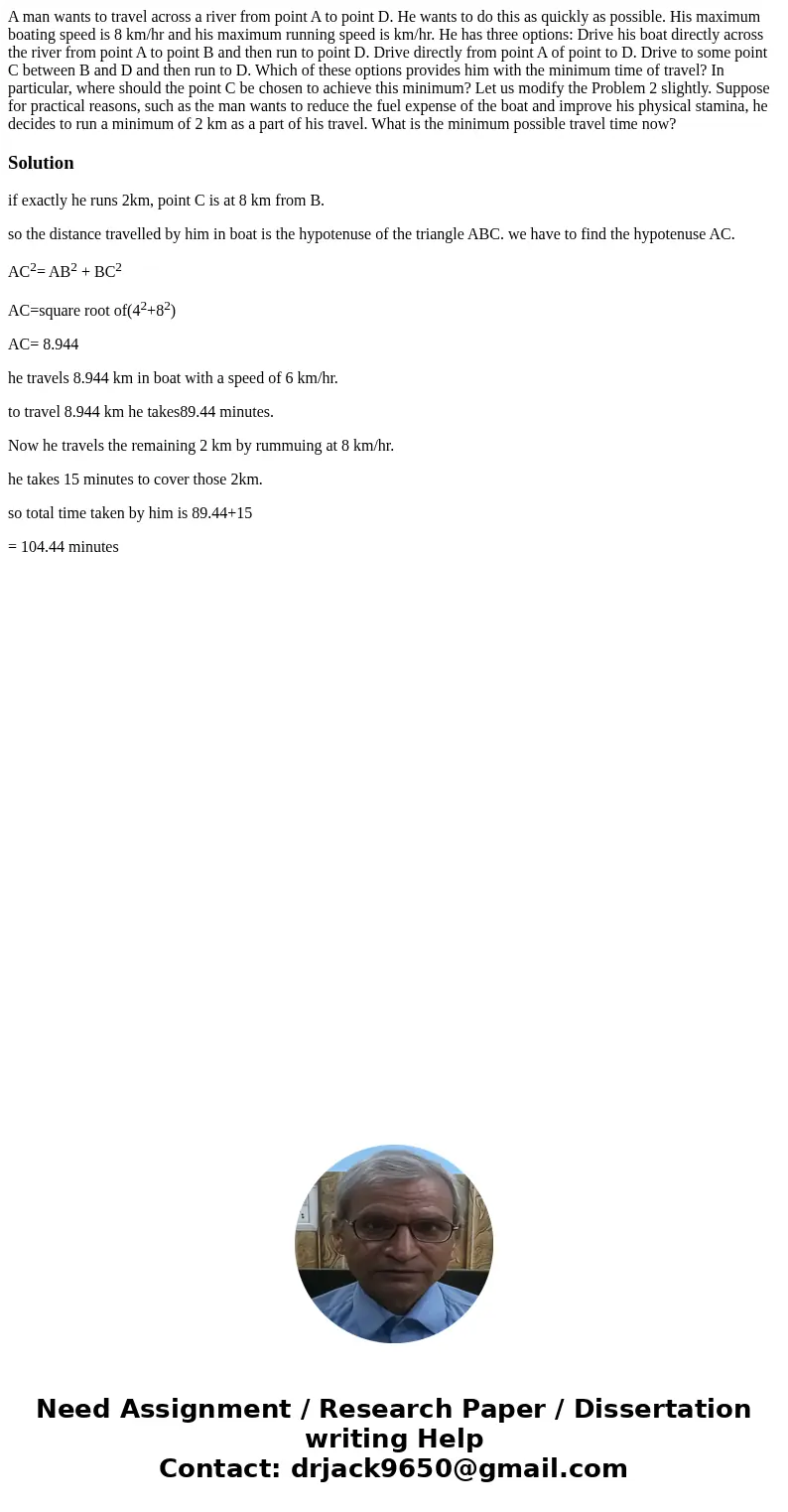A man wants to travel across a river from point A to point D
A man wants to travel across a river from point A to point D. He wants to do this as quickly as possible. His maximum boating speed is 8 km/hr and his maximum running speed is km/hr. He has three options: Drive his boat directly across the river from point A to point B and then run to point D. Drive directly from point A of point to D. Drive to some point C between B and D and then run to D. Which of these options provides him with the minimum time of travel? In particular, where should the point C be chosen to achieve this minimum? Let us modify the Problem 2 slightly. Suppose for practical reasons, such as the man wants to reduce the fuel expense of the boat and improve his physical stamina, he decides to run a minimum of 2 km as a part of his travel. What is the minimum possible travel time now? 
Solution
if exactly he runs 2km, point C is at 8 km from B.
so the distance travelled by him in boat is the hypotenuse of the triangle ABC. we have to find the hypotenuse AC.
AC2= AB2 + BC2
AC=square root of(42+82)
AC= 8.944
he travels 8.944 km in boat with a speed of 6 km/hr.
to travel 8.944 km he takes89.44 minutes.
Now he travels the remaining 2 km by rummuing at 8 km/hr.
he takes 15 minutes to cover those 2km.
so total time taken by him is 89.44+15
= 104.44 minutes

 Homework Sourse
Homework Sourse